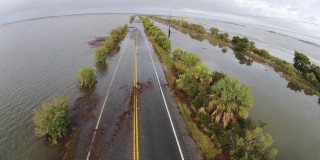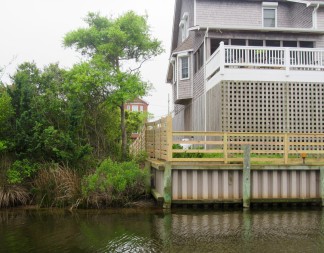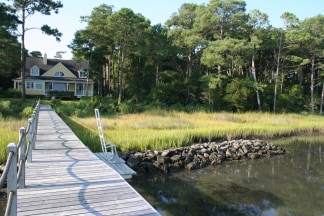One on trees in the Sid Valley - where the relationship between a changing climate and trees was discussed:
Futures Forum: Sidmouth Arboretum AGM > Tuesday 16th January > guest speaker Dame Julia Slingo, former Met Office chief scientist
The other on the potential for flooding and rising sea levels on the Sidmouth seafront:
Managing the Impacts of Rising Sea Levels
Led by Hamish Hall, Director with WSP
With the Institute of Civil Engineers, South West
Hamish is Head of WSP's UK Water Specialisms team, based in Exeter. He is a Chartered Civil Engineer with over 25 years’ professional experience. Mr Hall's main interests lie in coastal management, waterside & harbour development, river engineering and climate change adaptation. He has worked extensively across the UK and abroad.
Cafe Scientifique: Managing the Impacts of Rising Sea Levels | Sidmouth Science Festival
Which ties in with the still-ongoing BMP:
Futures Forum: Beach Management Plan: report from 10th January meeting
Meanwhile in the United States, these issues are coming together:
Climate change before your eyes: Seas rise and trees die - Technology & Science - CBC News
Fires, droughts and hurricanes: What's the link between climate change and natural disasters? - LA Times
With the debate still intensely politicised:
Forests destroyed in wildfires not recovering due to climate change, scientists reveal | The Independent
In a Warming California, a Future of More Fire - The New York Times
Why the California Wildfires Are Not Due to So-called Climate Change - New American
Although in a piece out today, the US military has no qualms taking climate change and all its consequences seriously:
A tale of two policies: climate change, Trump, and the U.S. military - Mongabay
Of course, engineers prefer engineering solutions - the bigger the better - whether in the UK or elsewhere:
Crunching Carbon | Ipswich Flood Barrier | Feature | New Civil Engineer
And of course the super-rich can always buy themselves out of any spot of bother - wherever that may be:
Dubai's new self-sufficient floating villas can withstand rising seas | Inhabitat - Green Design, Innovation, Architecture, Green Building
But there might be a way to use trees and other 'green options' to help against flooding and rising sea levels:
Walls Won't Save Our Cities From Rising Seas. Here's What Will
'Green' approaches may be the best way to protect coastal communities from flooding associated with climate change.
by Joseph Bennington-Castro / Sep.19.2017
 Highway 80 in Georgia regularly floods during high tides. This flooding occurred after a storm in October 2015. Dronemedia.com
Highway 80 in Georgia regularly floods during high tides. This flooding occurred after a storm in October 2015. Dronemedia.comTo some people, climate change seems like a problem only for future generations. But for residents of many coastal cities, the future is already here — in the form of rising sea levels and frequent, destructive floods. And the problem is only going to get worse. The latest research suggests that by 2100, up to 60 percent of oceanfront communities on the East and Gulf Coasts of the U.S. may experience chronic flooding from climate change.
The fix for inundation might seem pretty simple: just erect tall seawalls and other barriers to keep the ocean at bay. But barriers can fail. Even when they don’t, they can have the unintended consequence of harming delicate coastal habitats and the animals that live in them.
"Fundamentally, there is an issue with the concept of building walls to stop flooding," says Rachel Gittman, an environmental scientist and ecologist at East Carolina University. "We should not be thinking that we can stop every flood."
Surfers walk the sand in Solana Beach, Calif., in 2013, below a seawall which holds back the ocean and supports the hill side where homes sit precariously perched atop cliffs. Lenny Ignelzi / AP File
The good news? Walls aren’t the only option. Environmental scientists and engineers have devised a range of clever ways to prevent coastal flooding by sopping up water and limiting erosion and wave energy. And then there’s permeable pavement, which allows floodwaters to seep into the ground below rather than pool on the surface.
Many experts, Gittman included, are convinced that these and other “green” alternatives will hold the key to saving our coastal communities.
The good news? Walls aren’t the only option. Environmental scientists and engineers have devised a range of clever ways to prevent coastal flooding by sopping up water and limiting erosion and wave energy. And then there’s permeable pavement, which allows floodwaters to seep into the ground below rather than pool on the surface.
Many experts, Gittman included, are convinced that these and other “green” alternatives will hold the key to saving our coastal communities.
"HARD" VS. "SOFT" DEFENSES
Seawalls, along with bulkheads (vertical walls that retain soil but provide little protection from waves) and revetments (sloping structures on banks and cliffs) have long been the go-to defenses against coastal flooding. Fourteen percent of all continental U.S. shoreline has been armored with these “hard” structures — and that number is rising. At the current rate, it’s estimated that nearly one-third of U.S. coastline will be armored by 2100.
But there are big problems with these bulwarks.
For one thing, instead of damping wave energy, these structures simply deflect it to adjacent areas. So if waves batter a seawall along one coastal property, their energy will be redirected to neighboring properties. That means these properties will experience wave energies even greater than would be experienced in the absence of seawalls.
And even carefully constructed barriers are prone to failure. This can happen, for example, when wave action erodes soil or sand at the base of a wall and causes it to collapse.
Then there is the environmental toll of armored shorelines. These barriers compromise delicate coastal habitats and reduce biodiversity.
"You end up losing the structural complexity that organisms like to use," Gittman says. "The wall is just a wall and it's not providing any habitat."
A better approach, Gittman says, is to create so-called “living shorelines.” The term encompasses various “soft” shore-protecting techniques and technologies involving mostly natural materials.
The components of a living shoreline are site-specific. For shores with relatively calm waters, the best bet is often a water-absorbing salt marsh, possibly fortified with sill-like ledges made of rocks, oyster shell bags, or “logs” made of coconut fiber. Alternatively, a shoreline may benefit from the planting of mangroves, which develop hardy root systems firmly anchored in mud.
 A bulkhead constructed directly adjacent to a natural marsh shoreline in Frisco, NC Northeastern University
A bulkhead constructed directly adjacent to a natural marsh shoreline in Frisco, NC Northeastern University"Building a living shoreline starts with a good understanding of what the natural condition along that shoreline once was," says Steven Scyphers, a coastal scientist at Northeastern University. He adds that the process of creating a living shoreline might be as straightforward as restoring what once existed at the site — whether it’s oyster reefs, coral reefs, or other living breakwaters that dissipate wave energy.
The newly protected shorelines become more stable over time as plants, roots, and reefs grow. This brings a number of benefits.
Salt marshes and mangroves trap sediment and organic matter, allowing them to grow in elevation. That affords rising protection against inundation. Similarly, the growth in height of oyster reefs can outpace sea level rise, allowing them to continue protecting shorelines well into the future. And according to National Oceanic and Atmospheric Administration, just 15 horizontal feet of marshy terrain can absorb 50 percent of incoming wave energy.
Direct comparisons between hard and soft defenses are hard to come by. But Gittman's research suggests that marshes are significantly better than bulkheads at protecting shorelines. In a survey of three coastal regions of North Carolina, Hurricane Irene damaged 76 percent of bulkheads. Shorelines protected by marshes sustained no damage.
Living shorelines aren't suitable for all situations, Gittman says, adding that protecting New York City from a powerful storm like Hurricane Sandy would have required establishing miles of natural habitat, like oyster reefs, to dissipate the big waves. But a mix of natural and artificial protections could work quite well in similar situations.
If a shoreline is already armored, Scyphers says, the structure could be augmented with natural components. The Alabama Nature Conservancy is doing just that along walled coastline areas, strengthening bulkheads with square wire cages. Over time, marsh plants will grow through the cages, creating a slope of plant matter that lessens wave impact against the wall.
GOING GREEN
If living shorelines can help keep coastal communities safe from water that from the sea, what about water that falls from the sky?
Aside from raising sea levels, warmer global temperatures are expected to increase the intensity and frequency of heavy downpours. That means more localized flooding (when rainfall overwhelms urban drainage systems) and riverine flooding (when river channels overflow their banks).
"If we had developed urban patterns differently, we wouldn't have these issues," says landscape architect and urban ecologist Alexander Felson, an assistant professor at the Yale University School of Forestry. "What we've done is we've put in a lot of impervious surfaces and blockage to the natural hydrology of the landscape."
Felson says green infrastructure can help mitigate the flooding that can arise when much of the ground in an area is covered by asphalt and other impervious surfaces. Like living shorelines, green infrastructure encompasses many systems, but all are basically natural designs that absorb rainwater and storm water, thus channeling it into the ground.
One simple type of green infrastructure is the rain garden — essentially a “bowl” of dirt measuring about 100 to 300 square feet in diameter — that’s been filled with soil (typically clay and sand), plants, and mulch. These small-scale designs collect storm water runoff from houses or small buildings so that it can evaporate or be absorbed by plants and returned to the atmosphere as water vapor (via a natural process known as evapotranspiration).
In some communities, it makes sense to create larger versions of rain gardens known as bio-retention gardens. Felson recently spearheaded a project to do just that in flood-prone parts of Bridgeport, Connecticut, on Long Island Sound.
"In our case, the site was a former wetland area that we filled, and we punched a hole through the clay layer to increase infiltration," he says. Periodically, the garden fills with rain and floodwater, turning into a full wetland that serves as habitat for wildlife. And that makes economic as well as ecological sense. As Felson says, "The cheapest thing you can do is restore natural drainage and create urban spaces that can flood."
To further boost a city's ability to handle large volumes of water, rain gardens, bio-retention gardens, and bioswales (sloped landscape features that channel water into vegetation-filled ditches) can be supplemented with other green
infrastructure.
A living shoreline (granite rock sill with salt marsh, both natural and planted) in front of a house on Bogue Banks in NC Northeastern University
Green roofs and green walls blanketed with vegetation can reduce the volume of storm water runoff from buildings. On the ground, concrete and other impervious surfaces can be replaced with a hard but porous surface. A new concrete product called Topmix Permeable can absorb water at a rate of about 880 gallons per minute. That means instead of pooling in parking lots and road surfaces, water infiltrates into the ground.
And, says Felson, “simply increasing the numbers of trees and canopies in a city increases evapotranspiration.”
Green roofs and green walls blanketed with vegetation can reduce the volume of storm water runoff from buildings. On the ground, concrete and other impervious surfaces can be replaced with a hard but porous surface. A new concrete product called Topmix Permeable can absorb water at a rate of about 880 gallons per minute. That means instead of pooling in parking lots and road surfaces, water infiltrates into the ground.
And, says Felson, “simply increasing the numbers of trees and canopies in a city increases evapotranspiration.”
THE REAL PROBLEM
Though they can be very effective at coping with excess water, living shorelines and green infrastructure enhancements don't address the root causes of coastal flooding — a problem that is especially severe in communities in Louisiana and Maryland.
"They are at the lowest and flattest parts of the coastal United States and also where the land is sinking," says Shana Udvardy, a Washington D.C.-based climate specialist with the Union of Concerned Scientists and co-author of a recent study on coastal flooding.
Climate change will only worsen the plight of these communities and similar ones in other parts of the country.
If global sea levels were to rise just one foot within the next 20 years (an "intermediate" scenario), the study showed, the number of chronically inundated communities would rise from 90 today to 170. More than 100 of these communities would see up to 25 percent of their livable land flooded.
By 2100, 490 communities would be chronically flooded under the intermediate scenario. Under the “high” scenario, where the sea level rises 6.5 feet, 670 communities would be chronically flooded. That includes Boston, Newark, Fort Lauderdale, Los Angeles, and all but one of the New York City’s five boroughs.
"The high scenario is increasingly plausible as the melting of ice sheets accelerates," Udvardy says, adding that communities will have to choose either to defend against flooding with walls, living shorelines, or green infrastructure; accommodate flooding by elevating houses and buildings; or retreat altogether from flood-prone areas.
But another option exists for protecting our cities from flooding: change our collective behavior to slow the rate of climate change.
If the world steeply cuts carbon emissions and warming is limited to 2 degrees Celsius above pre-industrial levels, about 380 U.S. communities could be saved from chronic flooding in this century, Udvardy says. As she puts it, "When it comes right down to it, the best way to help coastal communities is to implement the Paris climate agreement and keep global warming down."
Walls Won't Save Our Cities From Rising Seas. Here's What Will
Meanwhile, deforestation is the biggest contributor to climate change:
Futures Forum: Climate change and trees: The destruction of forests around the world causes about 10% of greenhouse gas emissions... Achieving large-scale forestation is not just theoretical. We know we can do it because a few countries have done it successfully.
.
.
.



No comments:
Post a Comment